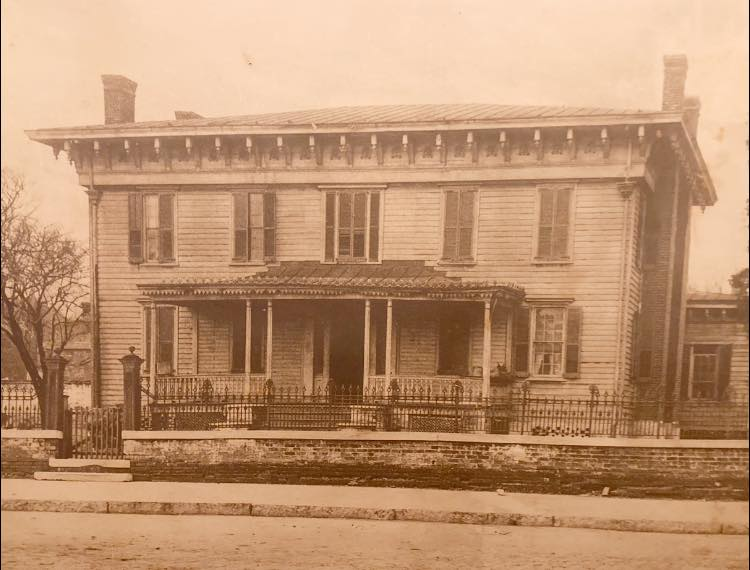The First White House of the Confederacy

Exploring the First White House of the Confederacy
William Sayre, one of Montgomery’s prominent citizens and ancestor of Zelda Sayre Fitzgerald , built a beautiful home in the Federal Style on a lot which is now at the corner of Lee and Bibb Streets downtown. Construction on the home began in 1832 and lasted until 1835. The architect of the home is unknown; however, the builder was A. M. Bradley. One of the successive owners, Colonel Joseph S. Winter, transformed the house, giving it the appearance it has today.
In 1855, Colonel Winter renovated the Federal style two-story house to the more fashionable Italianate style. The front portico was added along with enclosing the rear porch to create pantries, and a breezeway off the dining room was added to connect to the detached kitchen. Like most “Urban Plantations,” the lot contained a vegetable garden, stables and other outbuildings.
When Montgomery was chosen as the Capitol of the Confederacy, a residence was needed for the new President and his family. The home recently renovated by Joseph Winter had been purchased by Colonel Edmund S. Harrison of Prattville to use as a townhouse. Colonel Harrison offered to rent the home, completely furnished and staffed, to the Confederate Government for $5,000 a year. The house was ideally located being one block from the buildings which were the Government Building and two blocks from the Exchange Hotel where many visitors, dignitaries, and other members of the government would reside. The Davis family were able to add their own touches to the home with items brought from “Brierfield”, their plantation in Mississippi.
Although the Capitol was only in Montgomery for a short time, many extravagant dinner parties and social events were held at the White House and raved about throughout the South. President Davis would also receive and meet with some of the most prominent and powerful of the region’s social and political leaders, Northern sympathizers, along with European political and social figures in his study.
After the Capitol was moved to Richmond, Virginia, the house went back to private ownership. By the early part of the 20th century, it had become a rundown boarding house and was slated for demolition.
The White House Association was founded in 1900 and worked very hard to try and save the home, but could not get the owners to sell. Finally, Governor Kilby came to the aid of the Association and appropriated $25,000 to buy the home and have it moved to its’ current location on the corner of Union Street and Washington Avenue. Mrs. Davis worked with the Association by giving many of the Davis’ personal items to the Association. The home was restored to its’ 1860 appearance and rededicated on June 3, 1921. Today, the home is still operated by the White House Association and open to visitors. Many of those visitors enjoy a great meal at Chris’ Famous Hotdogs.
